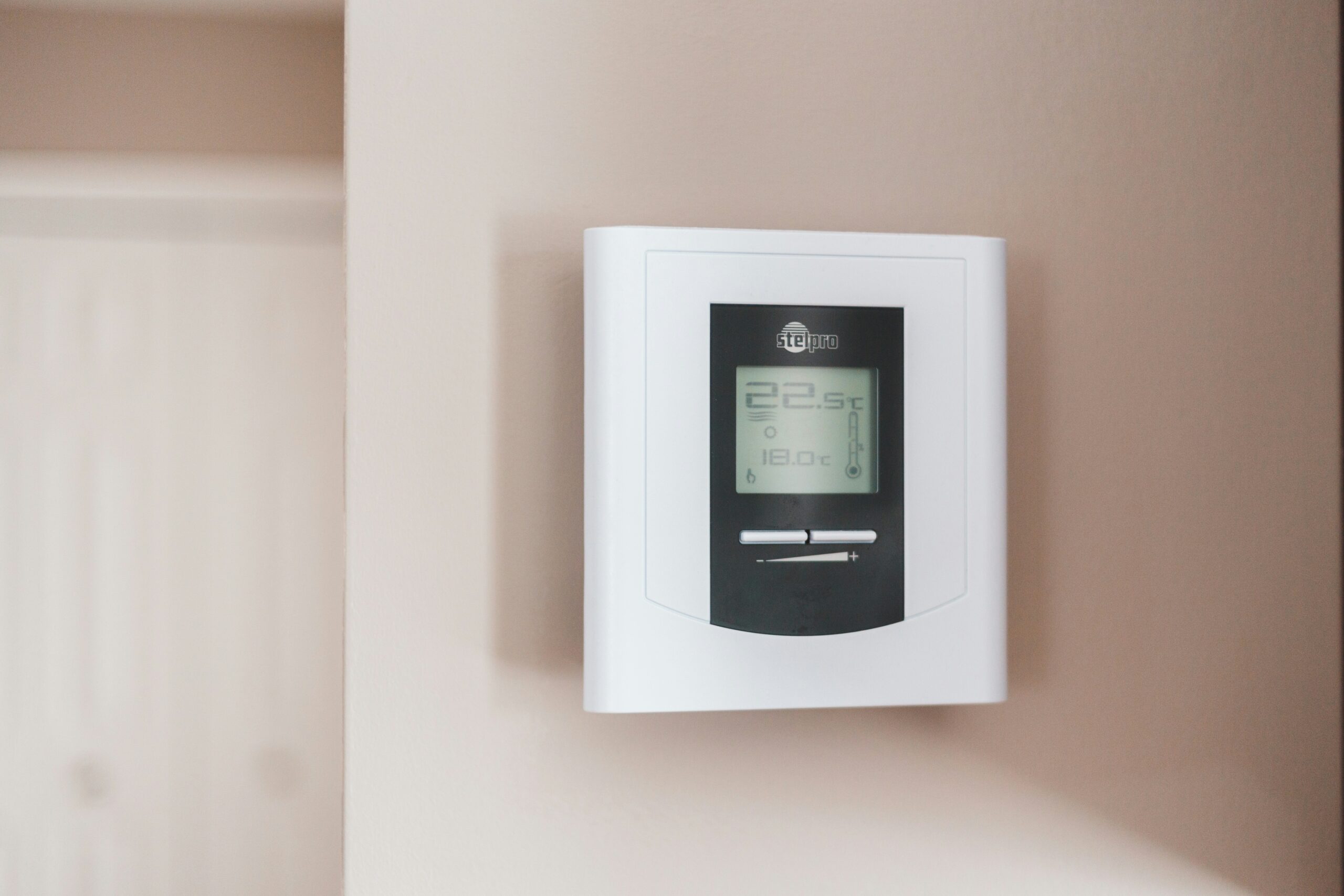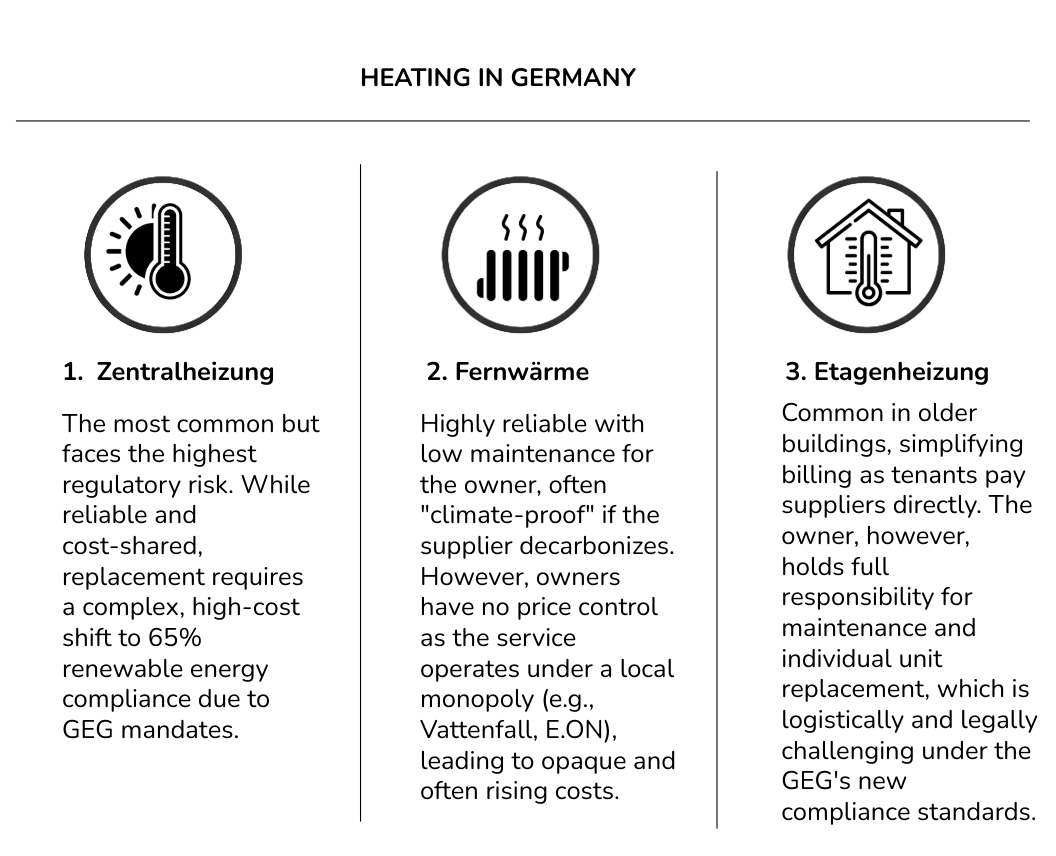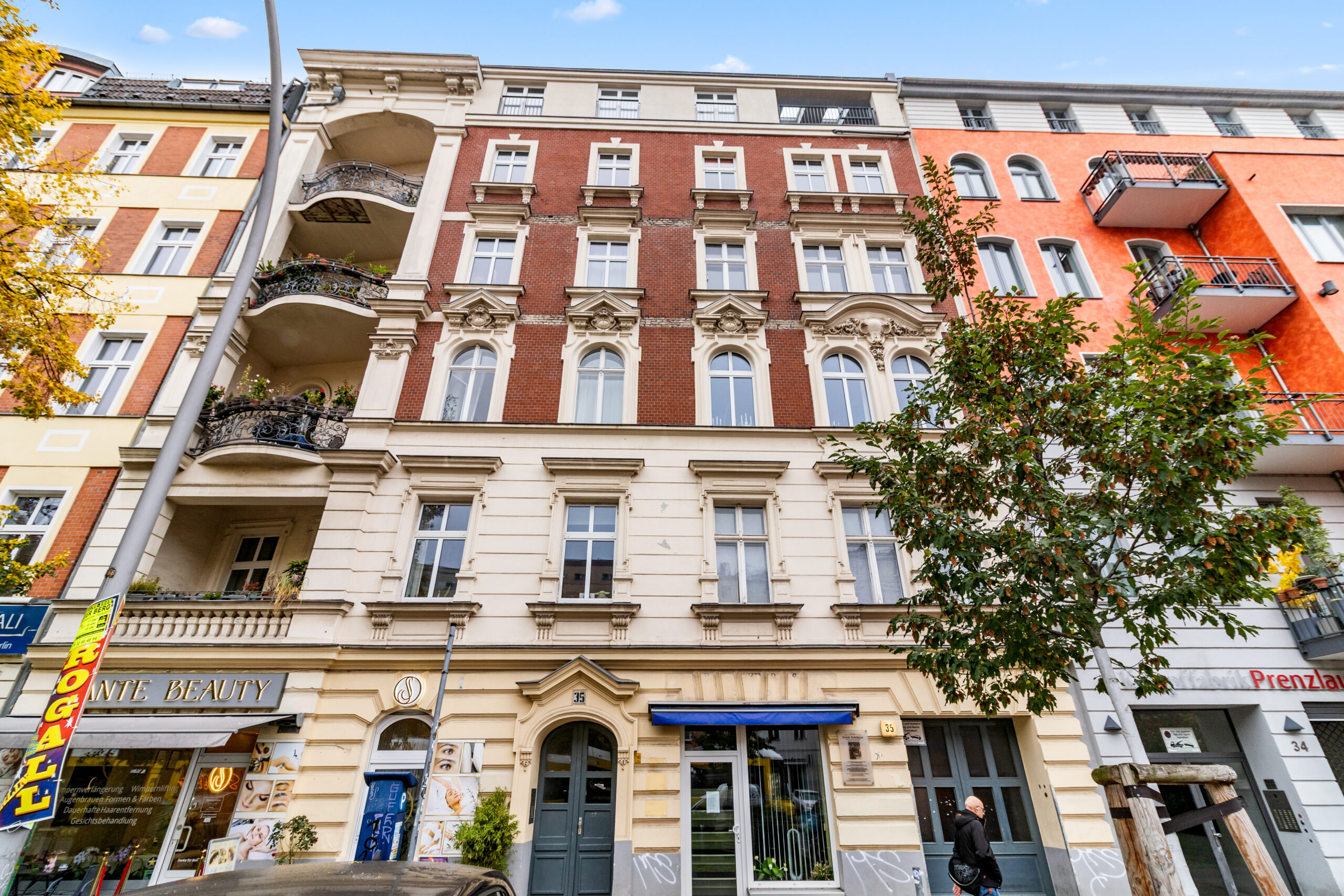
What you need to know as a landlord:
In Germany, with winter temperatures often settling in for over half the year, a reliable heating system isn’t just a comfort, it’s fundamental to daily life.
When buying an apartment in Berlin, the characteristics and implications of the heating system are more than just features; rather, it is one of the most influential components in calculating costs.
With the energy sector undergoing significant changes due to climate regulations, proactive planning isn’t just smart, it’s absolutely essential.
Here is an encompassing explanation of what is warming up the apartments in Berlin. The three pillars of warming apartments are either one of those listed below. The difference between them weighs heavily in terms of maintenance expenses and the need to be climate-proofed respectively.

1. Central Gas/Oil Heating (Zentralheizung)
This is the most popular version; here, there is one central boiler in the entire apartment complex that heats water to be distributed to every room. Gas is the standard fuel component here.
- Pros: Reliable and most apartments share the expenses (via WEG – Homeowner Association).
- Cons: The most impacted technology by climate regulation. In Germany’s GEG (Buildings Energy Act), there is an emphasis on the use of renewable energy as the ‘new standard’ to be maintained by new installations in buildings.
Though no impact on existing installations exists, replacing them is still challenging due to the cost implications and complexities involved.
2. District Heating ( Fernwärme)
Here, heat produced in massive factories (generally huge power production factories) is transported subterranean to be installed in buildings. This is already a ‘heat-as-a-service’ solution.
- Pros: Highly reliable with negligible expenses related to maintaining the technology in apartments. If renewable fuels are further utilized by suppliers, it would be ‘climate-proof’ as well.
- Cons: The suppliers (generally Vattenfall and E.ON here) set set prices; apartments are more expensive here with no possibility to change; with added subterranean linking costs to get hooked to these setups.
3. Individual Gas Heaters (Etagenheizung)
This consists of one installed gas boiler in each apartment’s premises.Common in pre-war buildings here.
- Pros: Apartments are billed to suppliers; no need to receive separate accounts here.
- Cons: The complete responsibility to maintain lies with the property here. Replacing each one individually is becoming increasingly difficult due to the GEG, since “a new device must meet present demands, which might be difficult to implement within one residential complex.


The owner’s financial profile: costs, risk exposures and the GEG
The conversation is very different today for property investors. It’s less about simply managing day-to-day operating costs and much more about the upfront investment and complexities of upgrading or replacing systems to meet new technical standards.
Heat pump technology has gained widespread acceptance among new German buildings; however, retrofit installations within current Berlin apartments might need significant planning, investment, and insulation upgrades, the need to transform current renewable technologies to full decarbonization seems to take precedence over current price costs.
The artful allocation of investments among the current technological alternatives has resulted in the decision to invest in heat becoming a series of strategic deals, so that real property investors are now concerned with the status quo regarding regulation compliance as opposed to the status quo with regard to renewable resource development.
The status quo regulation requirements, which provided a basis to avoid the costs involved in the redevelopment due to the regulation status by GEG, have shifted the focus of realty investors to the technology redevelopment investment today.



